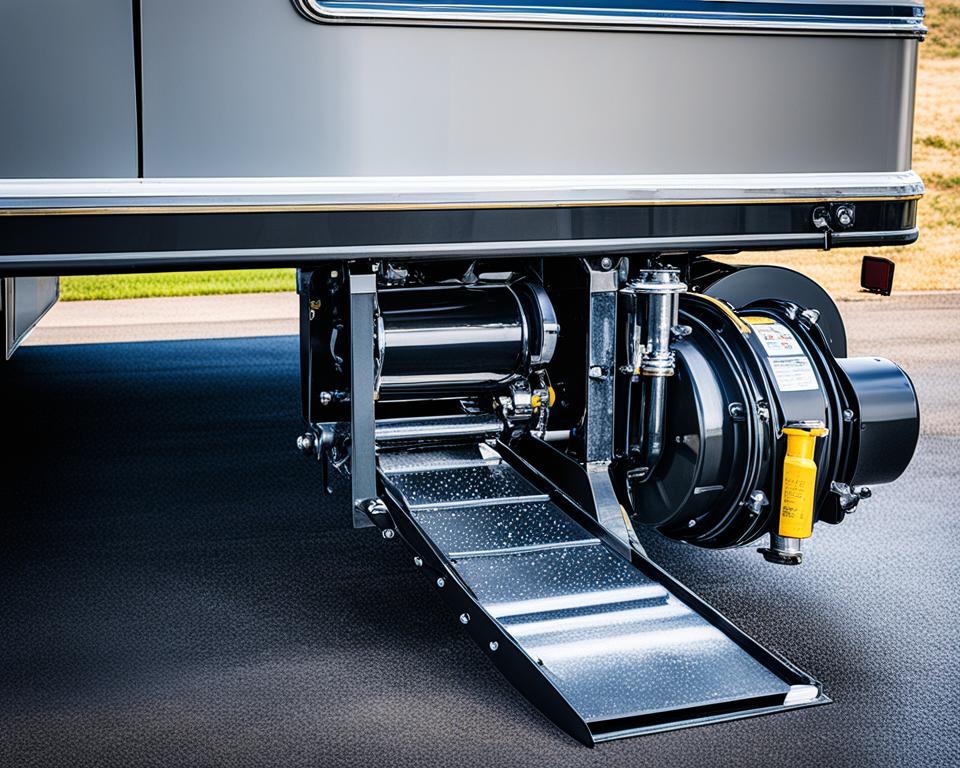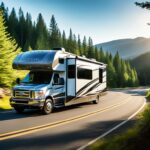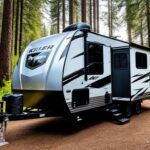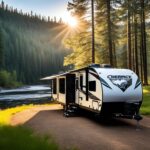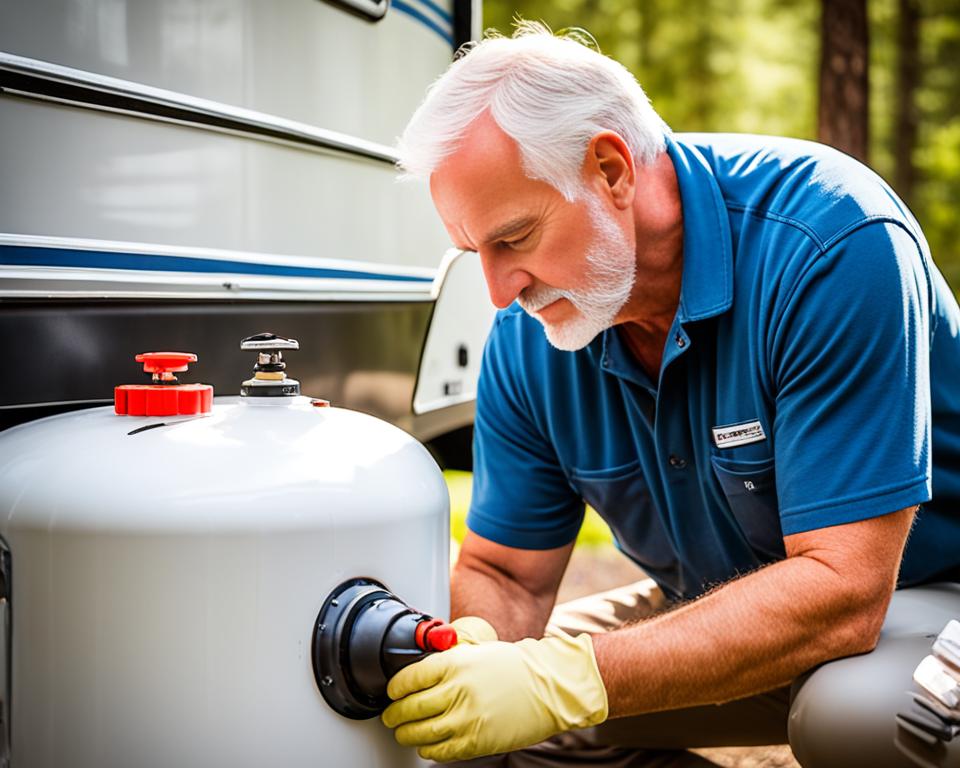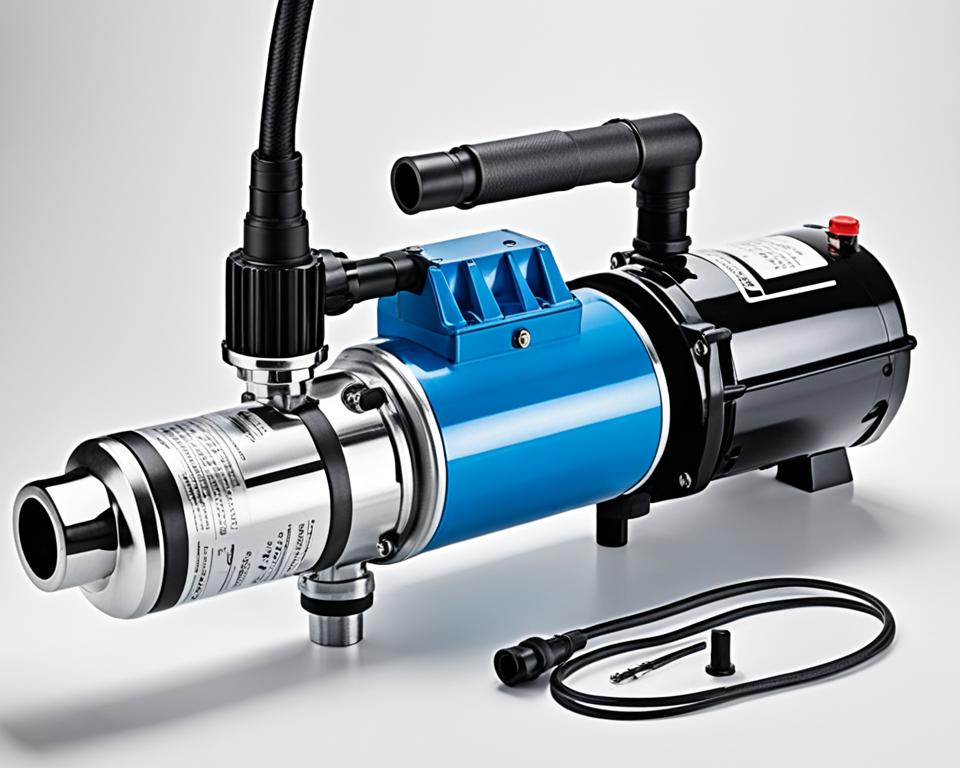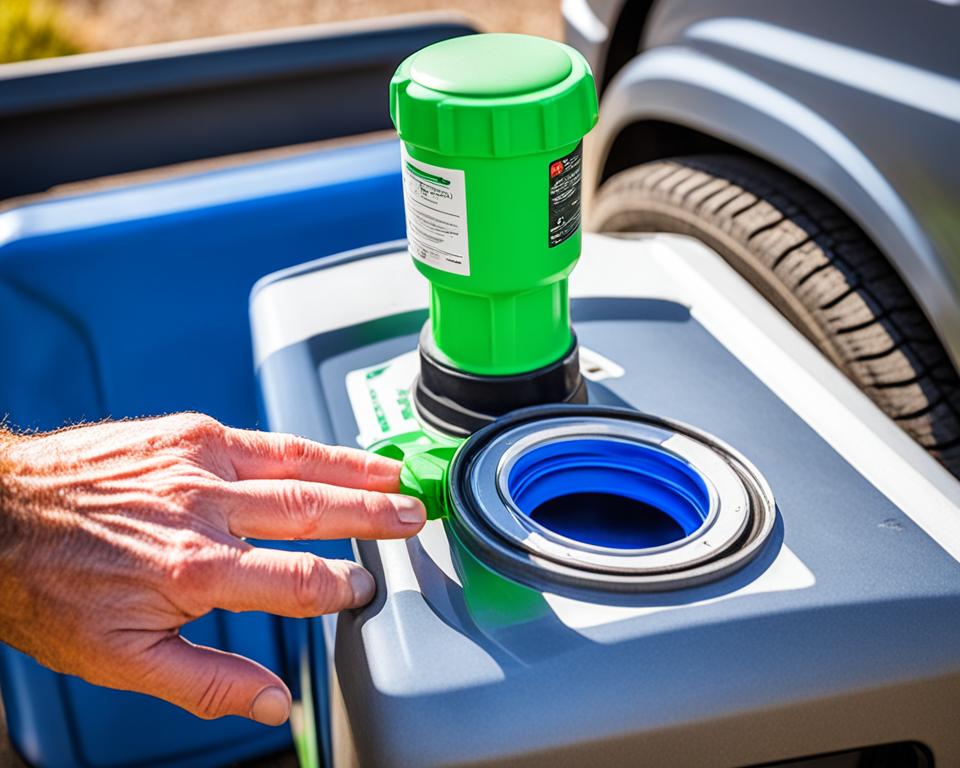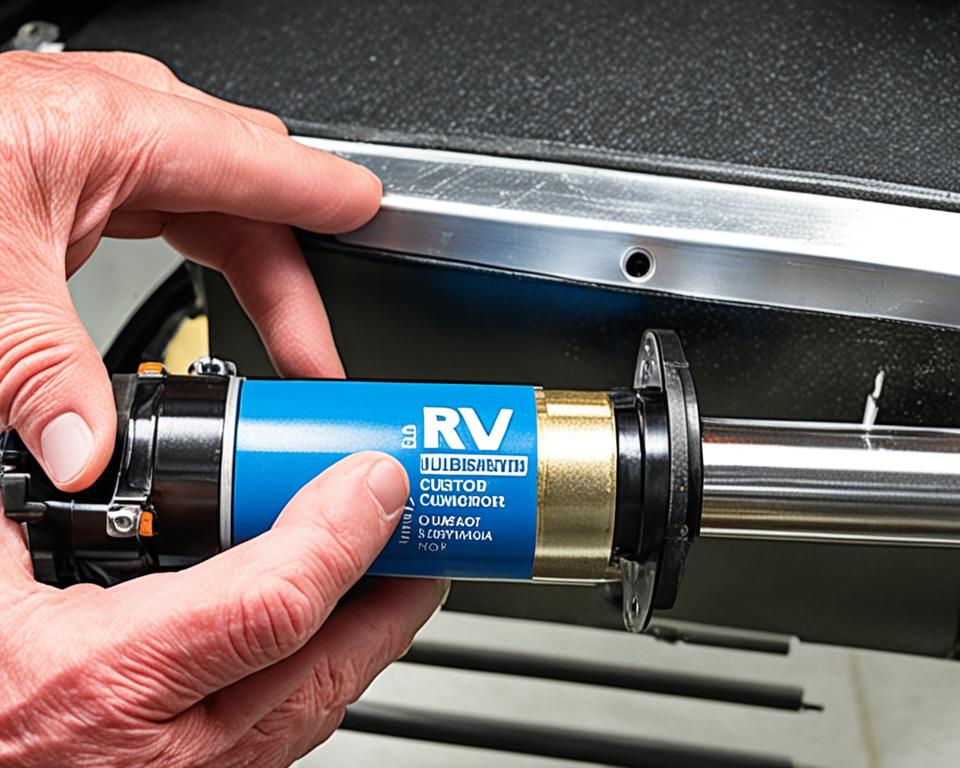RV slide lubrication is an essential task for maintaining the smooth operation of your RV’s slide outs and extending their lifespan. Regular lubrication can prevent wear and tear on the moving parts and help keep seals intact. In this article, we will explore the best tips and tricks for effective RV slide lubrication.
Why do you need RV slide lubricant?
Regular lubrication is crucial for maintaining the smooth operation of RV slide outs and preventing malfunctions. By properly lubricating the moving parts of your RV’s slide mechanisms, you can extend their lifespan and avoid costly repairs.
One of the main reasons why RV slide lubrication is important is to prevent the moving parts from seizing due to pressure and tension. Over time, the constant movement of the slide outs can cause friction, leading to wear and tear. By applying lubricant, you create a protective barrier that reduces friction and allows for effortless operation.
Another benefit of lubricating RV slide mechanisms is the preservation of seals. The seals around the slide outs help to ensure a tight, waterproof seal when the slides are closed. Without proper lubrication, these seals can dry out, crack, or become damaged, compromising their effectiveness. By lubricating the slide mechanisms, you keep the seals in good condition and prevent water leaks and potential water damage.
In addition to maintaining smooth operation and preserving seals, lubrication also helps prevent rusting and corrosion of the components. RV slide outs are exposed to various weather conditions, including rain, humidity, and road debris. Without adequate lubrication, these external factors can lead to rust formation and deterioration of the slide mechanisms. By regularly lubricating the slide outs, you create a protective barrier that repels moisture and prevents rust, prolonging the lifespan of the components.
Proper lubrication of RV slide outs is essential to ensure their smooth operation and extend their lifespan. By preventing seizing, maintaining seals, and preventing rust and corrosion, lubrication plays a vital role in keeping your RV slide mechanisms in optimal condition.
Things to consider when shopping for RV slide lubricant
When it comes to choosing the right slide lubricant for your RV, there are several important factors to consider. The type of lubricant you select can greatly impact the smooth operation of your RV’s slide outs and ensure a prolonged lifespan. Here are some essential tips to help you make an informed decision:
Petroleum-Based or Silicone-Based Lubricants?
One of the first decisions you’ll need to make is whether to opt for a petroleum-based or silicone-based lubricant. Both options have their advantages and considerations. Petroleum-based lubricants are typically more affordable and provide excellent lubrication for metal-to-metal contact points. On the other hand, silicone-based lubricants offer superior water resistance, protection against rust and corrosion, and are ideal for rubber and plastic components.
Aerosol or Liquid Formulations?
Another factor to consider is whether to choose an aerosol or liquid formulation. Aerosol lubricants are convenient and provide a fine mist that can penetrate hard-to-reach areas. They are particularly useful for applying lubrication to tracks and gears. Liquid lubricants, on the other hand, offer precise application and can be easily controlled. They are perfect for applying lubrication to window seals and other specific areas.
Other Potential Uses and Amount Needed
It’s worth thinking about the versatility of the lubricant and other potential uses it may have. Some lubricants can be used for multiple purposes, such as maintaining hinges and locks. Additionally, consider the amount of lubricant you will need for your RV. Larger RVs may require more lubricant, so it’s important to factor this into your purchasing decision.
Consider Your Budget
Lastly, consider your budget when shopping for RV slide lubricant. While it’s essential to invest in high-quality lubricant to ensure proper RV slide operation, there are options available to suit different budgets. Look for lubricant brands that offer a good balance of quality and affordability to meet your needs.
By considering these factors when shopping for RV slide lubricant, you can ensure that you choose the right lubrication product to maintain smooth RV slide operation and prolong the lifespan of your RV’s slide outs.
Comparison of RV Slide Lubricants
| Lubricant | Type | Advantages | Disadvantages |
|---|---|---|---|
| 3-IN-ONE RVcare Slide-Out Lubricant | Silicone-based | Provides dual-action formula for tracks, gears, pulleys, and slide and window seals | May be slightly more expensive compared to petroleum-based lubricants |
| Protect All Slide-Out Dry Lube Protectant | Silicone-based | Suitable for nearly all metal components | May require more frequent applications compared to aerosol lubricants |
| CRC Power Lube Industrial High Performance Lubricant | Petroleum-based | Highly concentrated formula, rapid drying | May not be suitable for rubber and plastic components |
The top RV slide lubricant options
When it comes to finding the best slide lubrication for RVs, there are several top options available on the market. These lubricants are specially formulated to provide long-lasting protection and smooth operation for your RV slide outs. Here are three highly recommended products:
1. 3-IN-ONE RVcare Slide-Out Lubricant
The 3-IN-ONE RVcare Slide-Out Lubricant is a favorite among RV enthusiasts for its exceptional performance. It features a dual-action formula that is designed to lubricate and protect various components, including tracks, gears, pulleys, and slide and window seals. This versatile lubricant ensures a smooth and effortless operation of your RV slide outs, preventing friction and wear. It is easy to apply and provides long-lasting results.
2. Protect All Slide-Out Dry Lube Protectant
Another top choice for lubricating RV slide outs is the Protect All Slide-Out Dry Lube Protectant. This high-quality dry lubricant is suitable for nearly all metal components found in RV slide mechanisms. It effectively reduces friction, eliminates squeaking noises, and helps extend the lifespan of your RV’s slide outs. The dry formulation ensures that dirt and debris do not stick to the lubricated surfaces, keeping them clean and optimized for smooth operation.
3. CRC Power Lube Industrial High Performance Lubricant
The CRC Power Lube Industrial High Performance Lubricant is an excellent option for RV slide lubrication. Its highly concentrated formula ensures superior protection and lubrication for all moving parts of your RV slide outs. This versatile lubricant is compatible with a wide range of materials, including metals, rubber, and plastic. It dries quickly, reducing the risk of attracting dirt and grime, and provides long-lasting lubrication even under demanding conditions.
When choosing an RV slide lubricant, it’s important to consider factors such as ease of application, compatibility with different materials, and the specific needs of your RV’s slide mechanisms. These top lubricant options have proven to be reliable choices, offering excellent performance and ensuring the smooth operation of your RV slide outs.
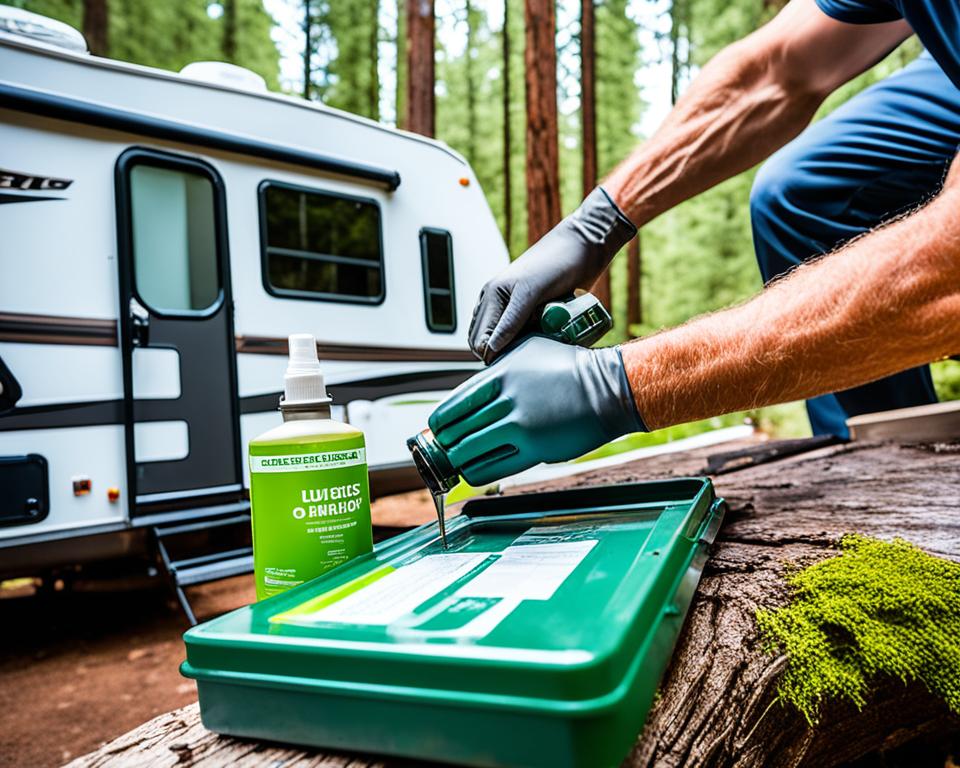
Track your RV maintenance
Keeping track of your RV maintenance tasks is essential for ensuring the longevity and optimal performance of your vehicle. With so many different maintenance tasks to remember, it’s easy to forget or overlook important maintenance activities. That’s where RV maintenance tracking tools can help.
One popular tool for RV maintenance tracking is RV LIFE Maintenance. This comprehensive platform allows you to organize and schedule all your RV maintenance tasks in one place. You can create a personalized maintenance calendar and set up reminders for routine inspections, oil changes, tire rotations, and more.
RV LIFE Maintenance uses an intuitive interface that makes it easy to input and update maintenance tasks. It provides RV-specific maintenance recommendations and reminders based on your RV’s make, model, and usage. Whether you’re a full-time RVer or an occasional traveler, this tool can help you stay on top of your maintenance needs.
By using RV maintenance tracking tools like RV LIFE Maintenance, you can reduce the risk of missed or delayed maintenance tasks. Regular reminders will help you stay proactive in taking care of your RV, preventing costly repairs and ensuring a safe and enjoyable RVing experience.
Slide Out Best Practices
When using your RV slide outs, it’s important to follow best practices to ensure their proper functioning. Factors like RV leveling, battery condition, and inspecting the area before extending the slide are crucial. It’s also important to understand the different types of slide mechanisms and their potential issues, such as screw jack, rack-and-pinion, and cable-driven mechanisms.
Best Practices for RV Slide Out Operation:
- Always ensure that your RV is level before extending or retracting the slide out. This helps prevent unnecessary pressure and strain on the slide mechanism.
- Check the condition of your RV’s batteries. Weak or low batteries may not provide enough power for the slide out motor, leading to slow or faulty operation.
- Prior to extending the slide out, survey the area to ensure there are no obstructions that could impede the smooth operation of the slide mechanism.
- Use caution when extending the slide out during windy conditions. Strong winds can cause the slide to move off track or damage the seals.
- Remember to always keep the slide seals clean and free from debris. This helps prevent leaks and ensures a proper seal when the slide is retracted.
Understanding Different Types of Slide Mechanisms:
There are different types of slide mechanisms commonly found in RVs, including screw jack, rack-and-pinion, and cable-driven mechanisms. Each type has its own unique characteristics and potential issues, so it’s important to be familiar with them.
Here are some key points to consider:
- Screw Jack Mechanism: This type of mechanism uses a screw drive system to extend and retract the slide. It’s important to keep the screw lubricated and free from debris to ensure smooth operation.
- Rack-and-Pinion Mechanism: This mechanism utilizes a rack and pinion gear system to move the slide in and out. Regular lubrication of the gears is essential to prevent wear and ensure proper functioning.
- Cable-Driven Mechanism: Cable-driven slide outs use cables and pulleys to extend and retract the slide. It’s crucial to inspect the cables regularly for any signs of fraying or damage and replace them if necessary.
By following these best practices and understanding the different types of slide mechanisms, you can ensure the smooth and reliable operation of your RV’s slide outs.
| RV Slide Out Best Practices | Benefits |
|---|---|
| Level your RV before extending the slide out | Prevents strain on the slide mechanism |
| Check battery condition | Avoids motor issues and ensures smooth operation |
| Inspect area before extending slide | Prevents obstructions and damage to the slide mechanism |
| Be cautious during windy conditions | Prevents damage to the slide and seals |
| Clean and maintain slide seals | Ensures proper sealing and prevents leaks |
Slide Out Failure
Slide out failures can be frustrating and disruptive during your RV adventures. Understanding the common issues and troubleshooting techniques can help you address slide out problems effectively.
One common issue that can cause slide out failures is hydraulic fluid level problems. Low fluid levels can restrict the hydraulic system’s performance, leading to slide out malfunctions. It’s important to regularly check the hydraulic fluid level and top it up as needed.
Blown fuses or tripped breakers are another potential cause of slide out failures. These electrical components protect the slide out system from excessive current. If you experience a slide out failure, it’s worth checking the fuses and breakers to ensure they haven’t blown or tripped.
If you encounter a slide out failure and need to manually retract the slide, consult your RV’s owner’s manual for specific instructions. Each RV model may have different manual retraction methods, which may involve using a wrench or crank to retract the slide manually.
Slide out failures can also vary depending on the type of slide mechanism your RV has. Hydraulic slide out systems are popular and provide reliable operation. However, issues such as leaks, hydraulic pump malfunctions, or damaged hydraulic lines can cause slide out failures. Understanding the hydraulic system’s components and potential problems can help you troubleshoot more effectively.
Cable-driven slide out mechanisms are another common type found in RVs. These systems use cables to extend and retract the slide outs. Over time, cables can stretch, fray, or become misaligned, leading to slide out issues. Regular inspection and maintenance of cable-driven mechanisms can help prevent failures and keep your slide outs operating smoothly.
By understanding the potential reasons for slide out failures and familiarizing yourself with troubleshooting techniques, you can address and resolve slide out issues to get back on the road and enjoy your RV adventures.
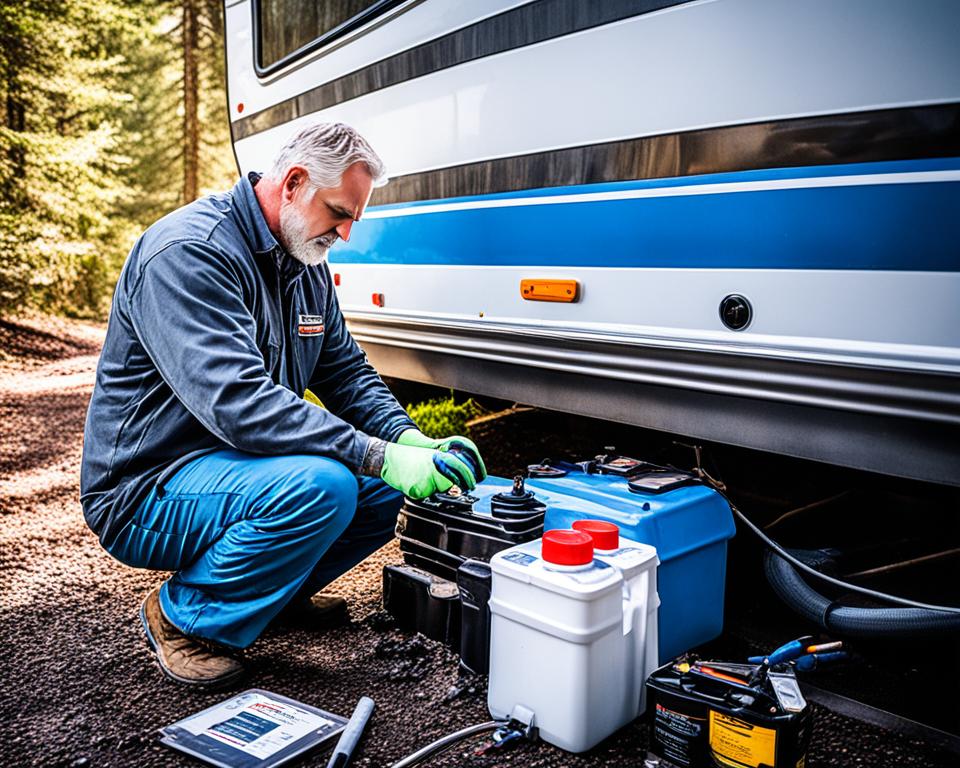
Troubleshooting Tips for Slide Out Failures:
- Regularly check hydraulic fluid levels and top up if necessary.
- Inspect and replace blown fuses or reset tripped breakers.
- Consult your RV’s owner’s manual for specific instructions on manually retracting the slide.
- Learn about the hydraulic system components and potential issues for hydraulic slide out systems.
- Regularly inspect and maintain cable-driven slide out mechanisms to prevent cable damage.
Slide Out Due Diligence
Regular inspection of your RV slide outs is crucial for identifying any damage or potential issues. By performing slide out inspections, you can take the necessary steps to prevent costly repairs and ensure the smooth operation of your slide outs. Here are some key areas to focus on during your slide out inspection:
- Mounting Points: Check the mounting points of your slide outs to ensure they are secure and properly aligned. Look for any signs of looseness or wear that could affect the stability of the slide outs.
- Seals: Pay close attention to the condition of the slide out seals. Inspect them for cracks, gaps, or signs of drying out. Damaged seals can lead to water leaks and potential damage to the interior of your RV.
- Gaskets: Examine the gaskets around the slide outs for any wear or deterioration. Replace any damaged gaskets to maintain a tight seal and prevent air or water leakage.
- Slide Out Structure: Inspect the slide out structure for any signs of corrosion, rust, or damage. Check for smooth operation and make sure there are no obstructions that could hinder the movement of the slide outs.
In addition to regular inspections, proper slide out seal maintenance is essential for preserving their integrity and functionality. One way to maintain slide out seals is by using a rubber seal conditioner. This conditioner helps to keep the seals supple and prevents them from drying out or cracking. Applying the conditioner regularly can extend the lifespan of the seals and ensure they continue to provide an effective barrier against the elements.
Conclusion
Effective RV slide lubrication is crucial for maintaining the smooth operation of your RV’s slide outs and preventing malfunctions. By using the right type of lubricant and following proper maintenance practices, you can extend the lifespan of your RV slide mechanisms and enjoy trouble-free RVing.
Regular lubrication is key to keeping your slide outs in optimal condition. Make sure to choose a lubricant that is specifically designed for RV slide mechanisms. Consider factors like ease of use and the type of lubricant that best suits your needs, whether it’s a petroleum-based or silicone-based product.
In addition to lubrication, regular inspection is vital for detecting any issues or damage. Check the mounting points, seals, gaskets, and the overall condition of your slide outs. Maintaining the integrity of the slide out seals by using a rubber seal conditioner can also help protect them from the elements and extend their lifespan.
Lastly, tracking your RV maintenance is essential for staying on top of lubrication and inspection tasks. Utilize tools like RV LIFE Maintenance to organize your maintenance schedule and receive timely reminders. By following these RV slide maintenance tips and extending the slide out lifespan, you can ensure a smooth and enjoyable RVing experience for years to come.
FAQ
Why is regular lubrication important for RV slide outs?
Regular lubrication of RV slide outs is necessary to ensure the smooth operation of the moving parts and prevent them from seizing due to pressure and tension. Lubrication also helps maintain seals and prevents rusting and corrosion of components. By extending the life of RV slide mechanisms through lubrication, you can avoid costly repairs and potential malfunctions.
What factors should I consider when shopping for RV slide lubricant?
When shopping for RV slide lubricant, you should consider whether to choose petroleum-based or silicone-based lubricants, as well as aerosol or liquid formulations. It’s also worth thinking about other potential uses for the lubricant, the amount needed for your RV, and your budget.
What are some of the top RV slide lubricant options available on the market?
Among the top RV slide lubricant options are the 3-IN-ONE RVcare Slide-Out Lubricant with its dual-action formula for tracks, gears, pulleys, and slide and window seals. The Protect All Slide-Out Dry Lube Protectant is another favorite among RV enthusiasts, suitable for nearly all metal components. The CRC Power Lube Industrial High Performance Lubricant offers excellent value with its highly concentrated formula and rapid drying.
How can I track my RV maintenance?
Tools like RV LIFE Maintenance can help you track your RV maintenance by organizing your schedule and sending you timely reminders when tasks are due. This can help you avoid costly repairs and accidents by staying on top of regular maintenance.
What are some best practices for operating RV slide outs?
When using your RV slide outs, it’s important to follow best practices such as leveling your RV, ensuring the battery is in good condition, and inspecting the area before extending the slide. It’s also important to understand the different types of slide mechanisms and their potential issues, such as screw jack, rack-and-pinion, and cable-driven mechanisms.
What are some potential issues with slide out systems, and how can I troubleshoot them?
Slide out failures can occur due to various reasons, including hydraulic fluid level issues, blown fuses, or tripped breakers. It’s important to know how to manually retract the slide if necessary, as well as the potential problems that can arise in different types of slide out systems like hydraulic and cable-driven mechanisms. Understanding these issues can help you troubleshoot slide out problems more effectively.
Why is slide out inspection important, and what should I look for?
Regular inspection of your RV slide outs is crucial for identifying any damage or potential issues. Checking mounting points, seals, gaskets, and the condition of the slide out structure can help prevent costly repairs. Paying attention to slide out seals and lubricating them with a rubber seal conditioner can also help maintain their integrity and keep the elements out of your RV.
Why is effective RV slide lubrication important, and how does it contribute to slide maintenance?
Effective RV slide lubrication is essential for maintaining the smooth operation of your RV’s slide outs and preventing malfunctions. By considering the type of lubricant, ease of use, and proper maintenance practices, you can extend the lifespan of your RV slide mechanisms and enjoy trouble-free RVing. Regular lubrication and inspection, along with tracking your RV maintenance, can help keep your RV in top shape.

